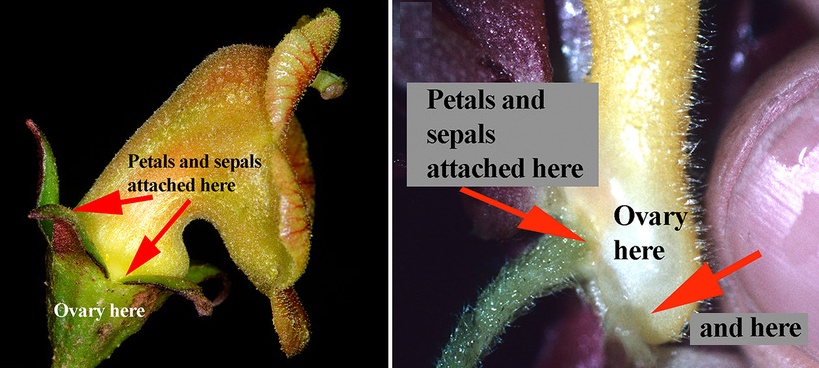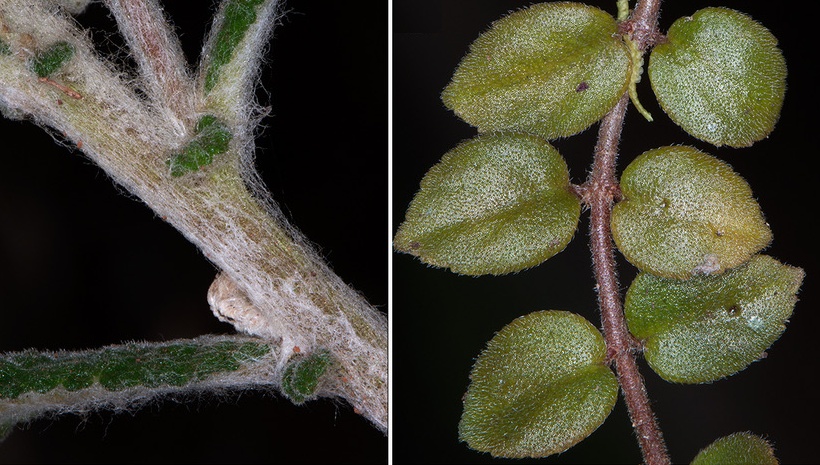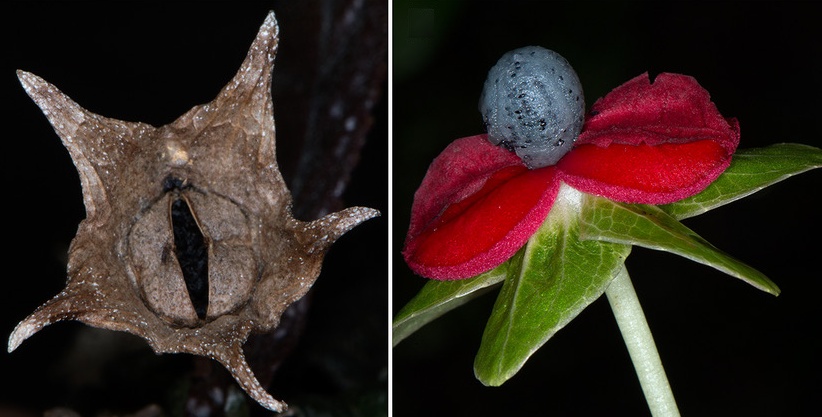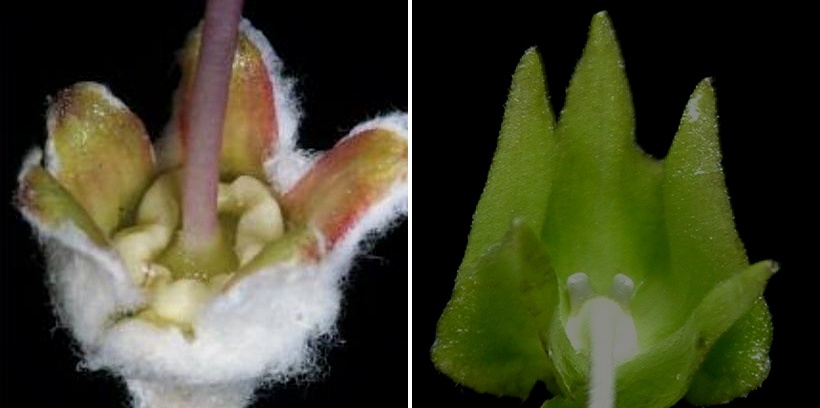Gesneria and Rhytidophyllum are sister groups (i.e., share a recent common ancestor), and as a result of their close relationship, they share many distinguishing features. The following list of illustrated characters differentiates them from all other members of the New World Gesneriaceae.
The ovaries are inferior in Gesneria and Rhytidophyllum. Inferior means that the ovary is below the attachment of the petals and sepals as in Gesneria bicolor (above left). In contrast, most New World Gesneriaceae, with very few exceptions, have superior ovaries. Superior means that the ovary is above the attachment of the petals and sepals, as in Crantzia cristata (above right).
The leaf arrangement in Gesneria and Rhytidophyllum is alternate, as in Rhytidophyllum acunae (above left). In contrast, most other New World Gesneriaceae are characterized by opposite leaves, as in Neomortonia rosea, (above right).
The fruits in Gesneria and Rhytidophyllum have woody capsules, as in Gesneria depressa (above left). In contrast, most fruits of New World Gesneriaceae have fleshy berries or fleshy capsules, as in Drymonia brochidodroma (above right), with few exceptions.
The nectary for Gesneria and Rhytidophyllum is annular (ring-like), as in Rhytidophyllum leucomallon (above left). In contrast, nectaries for most other New World genera are lobed. Examples include five separate lobes (esp. Columnea) to single-lobed or bilobed on the upper surface of the ovary, as in Sinningia barbata (above right).




